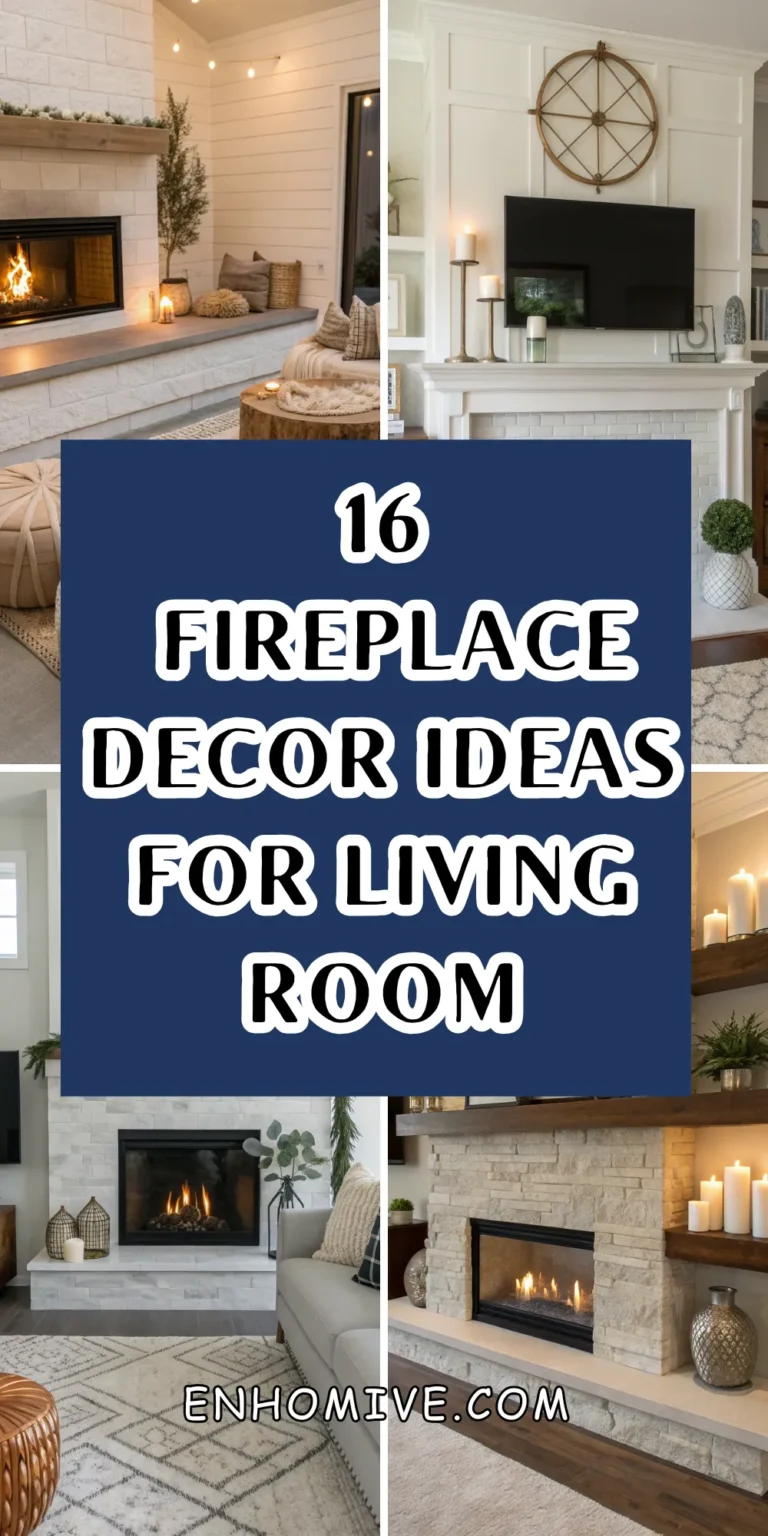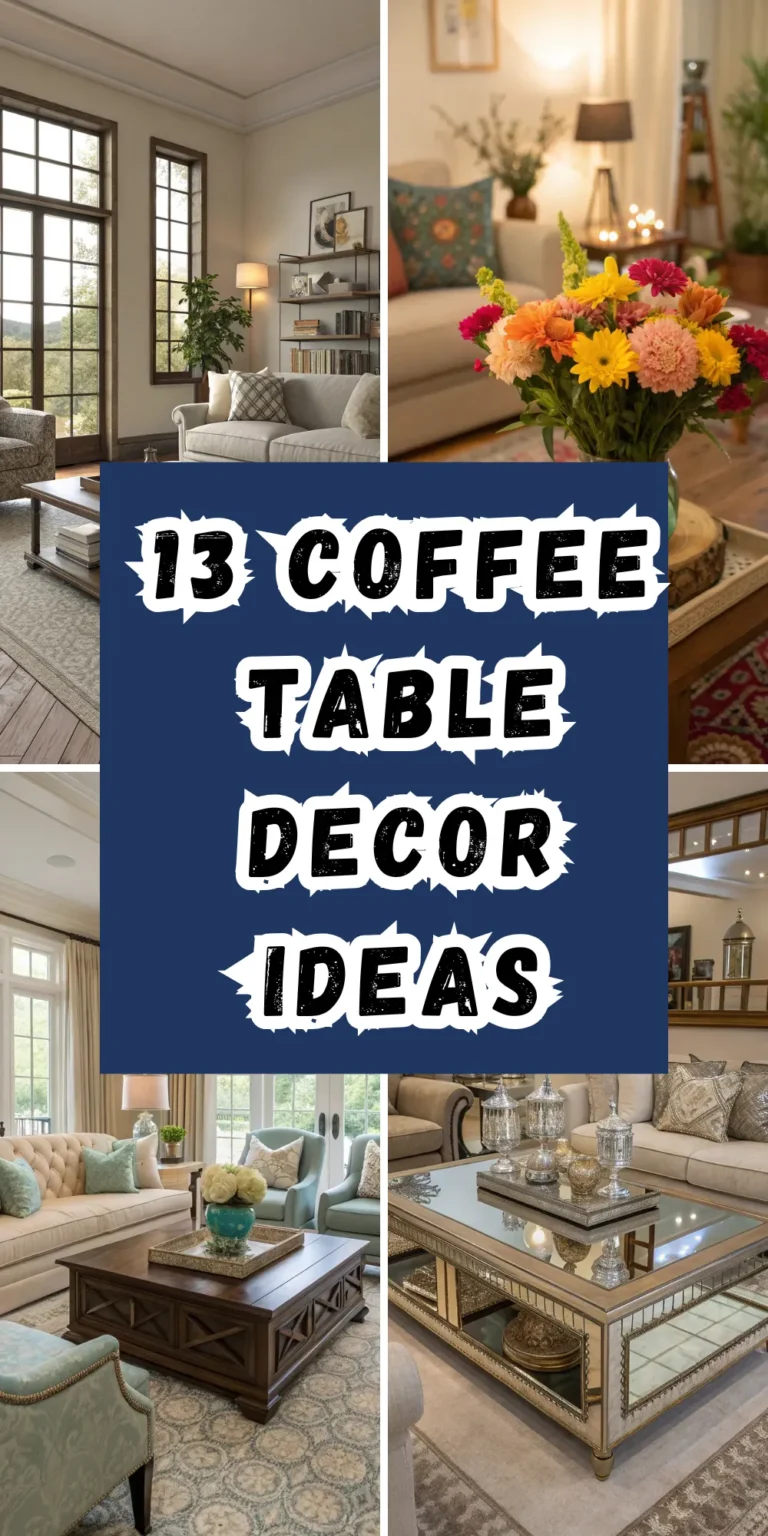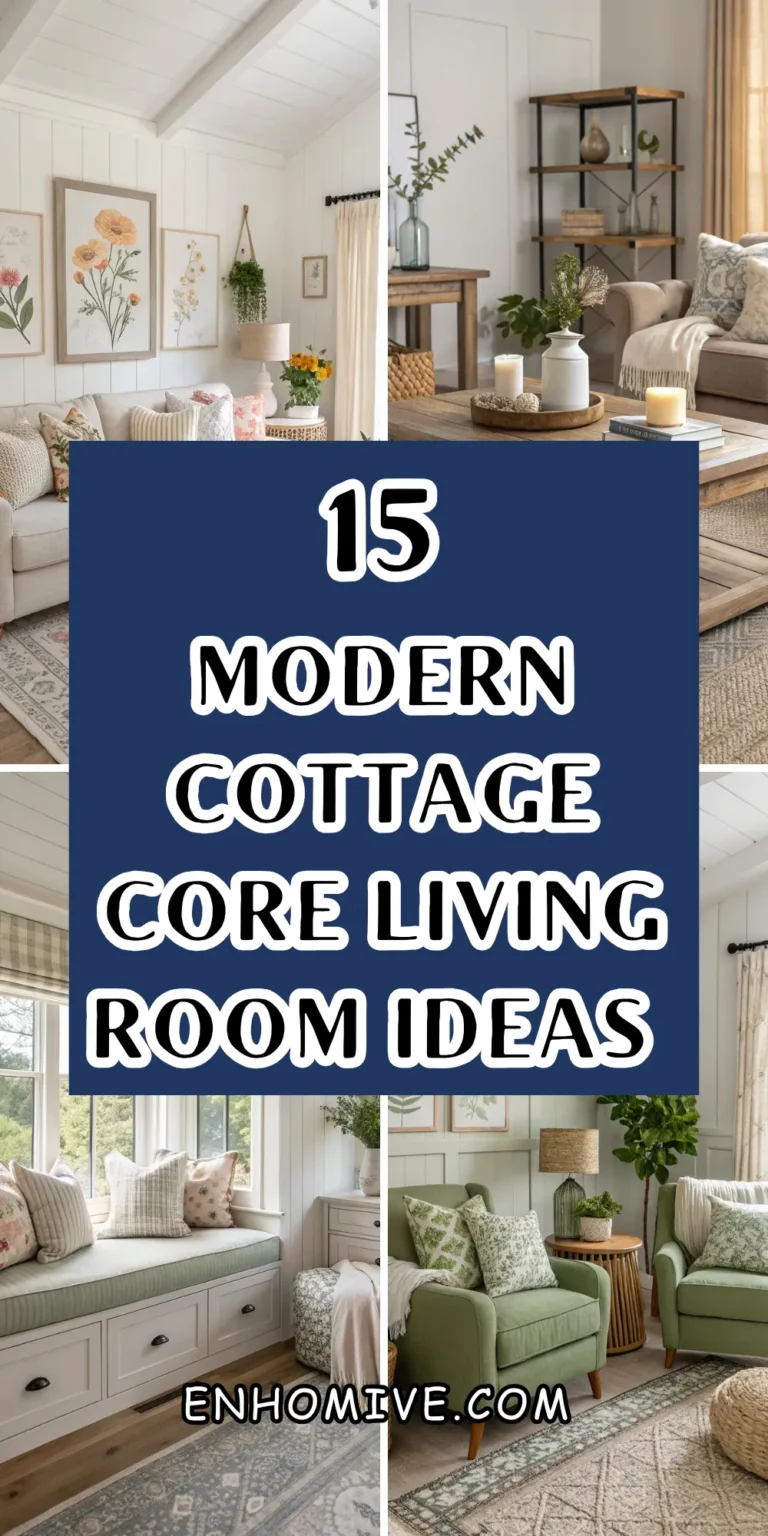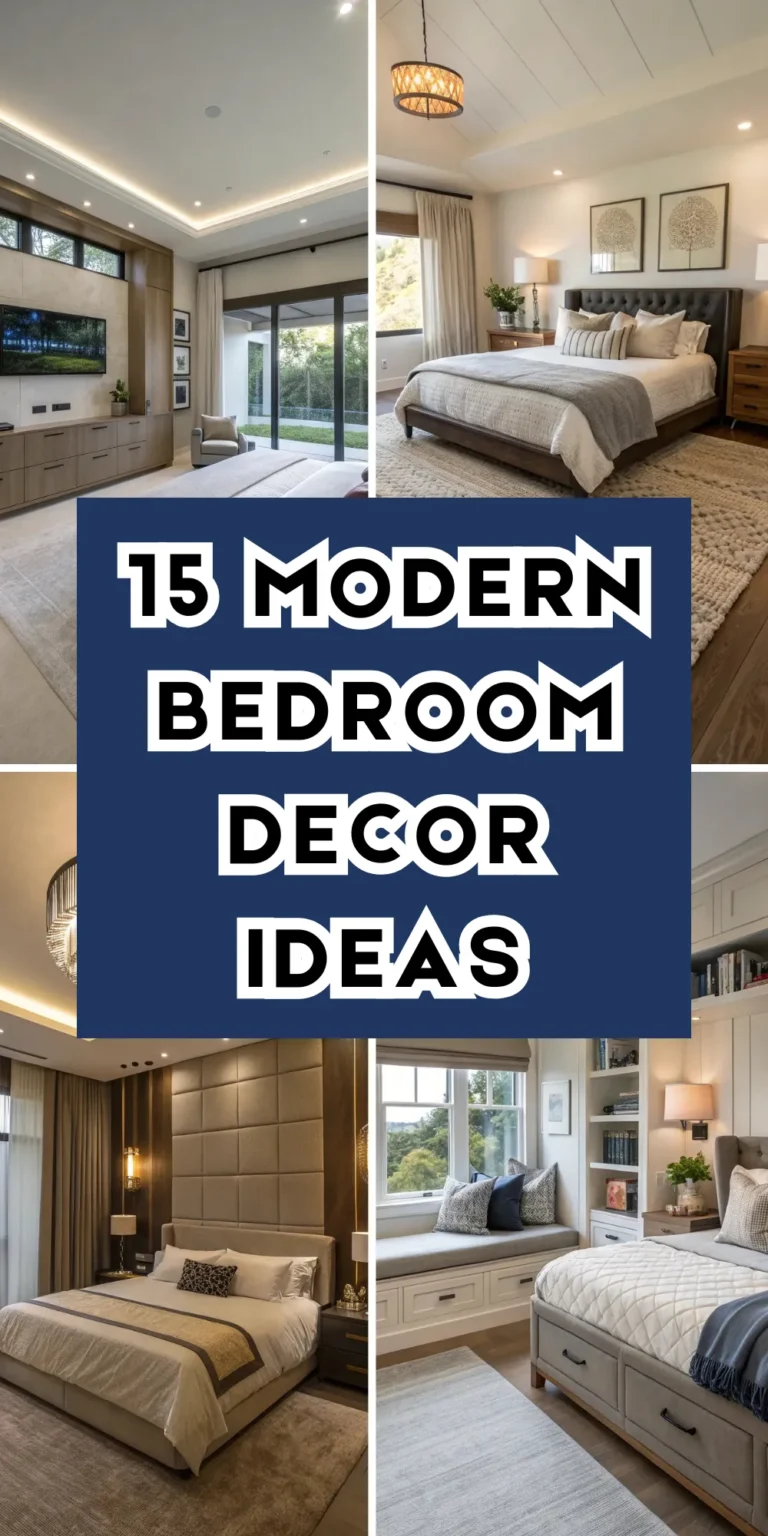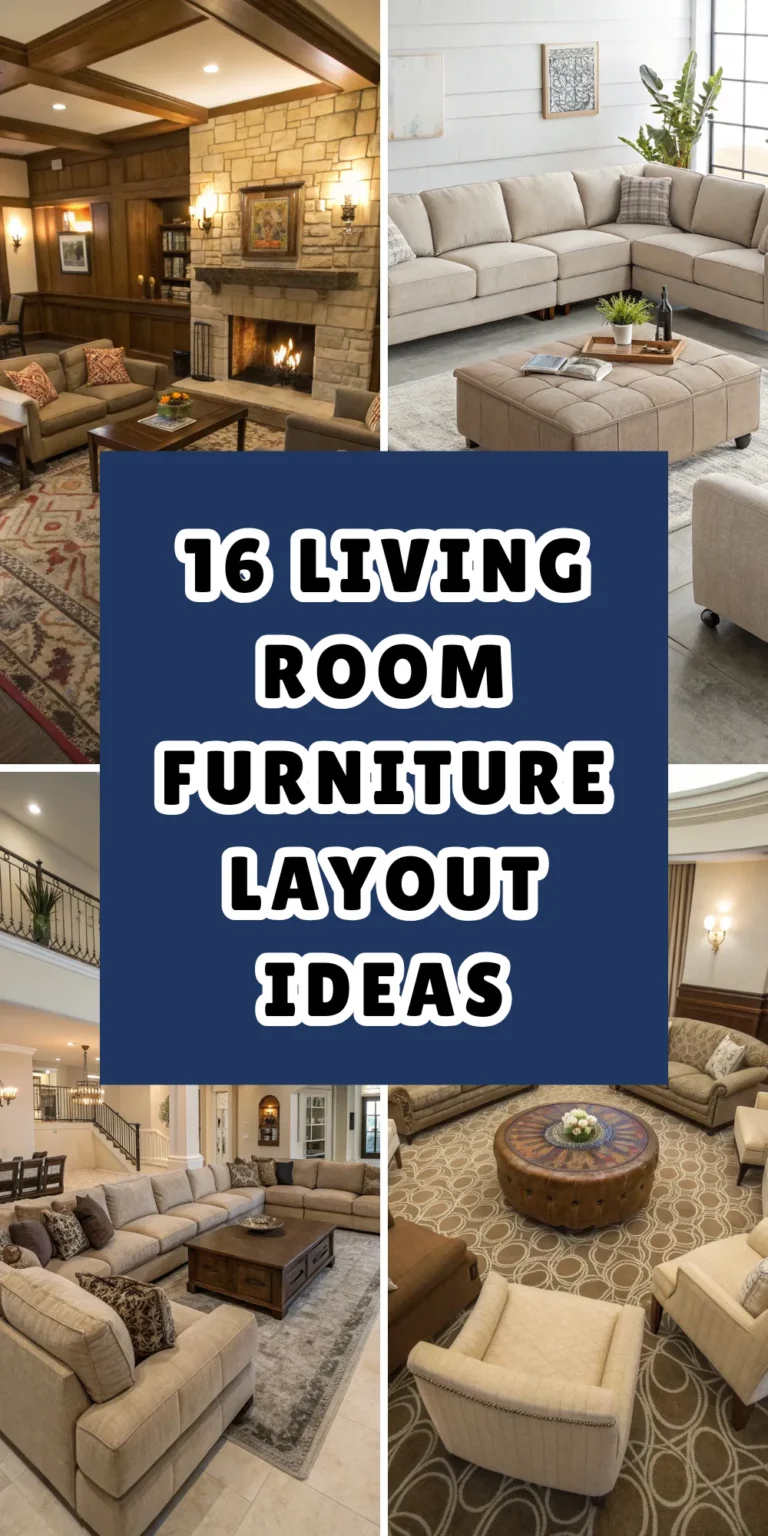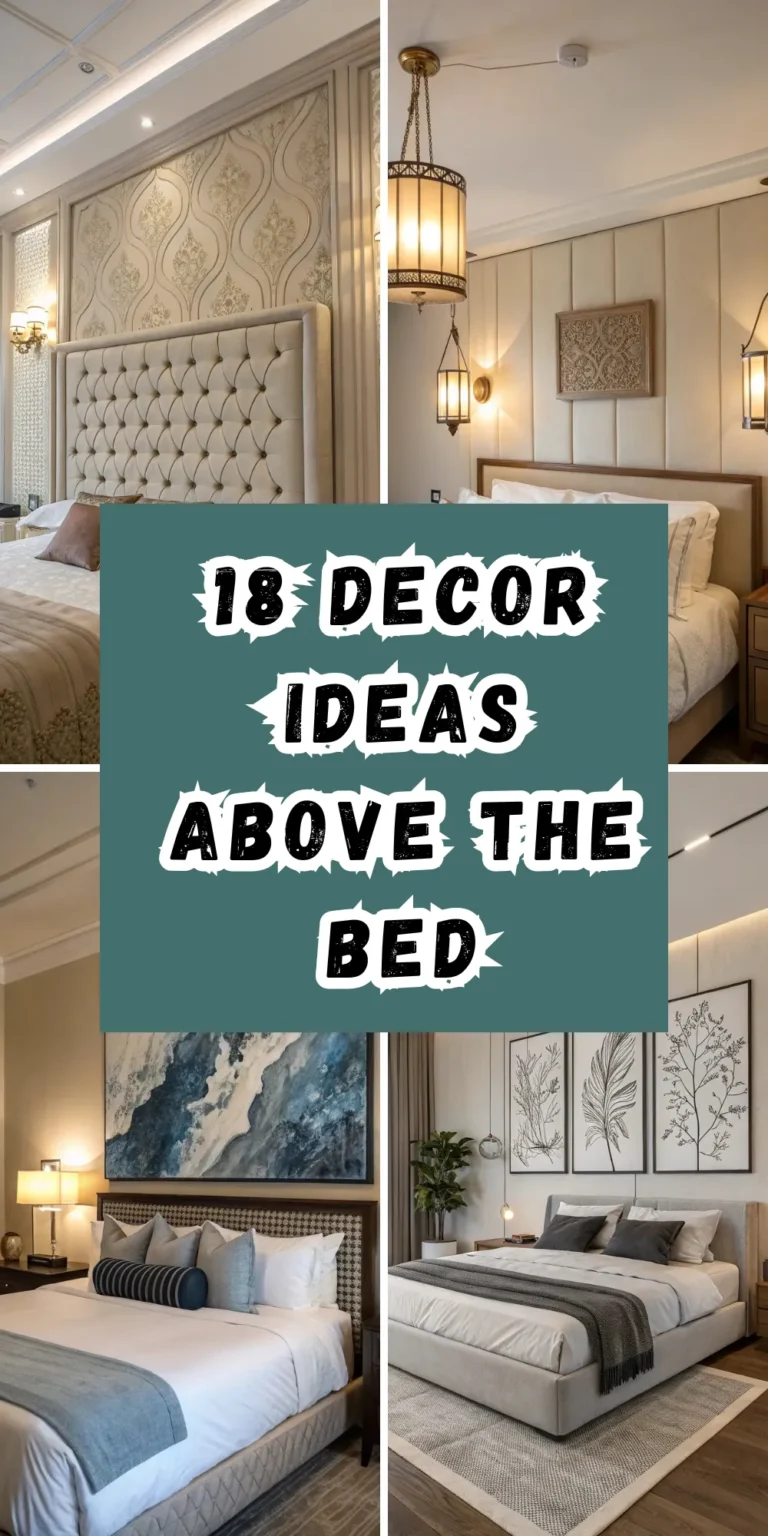16 Small Entrance Hall Ideas
Small entrance halls present unique opportunities to create memorable first impressions that maximize every square inch while setting the tone for your entire home. Modern design approaches have evolved to embrace these compact spaces, transforming potential limitations into showcases of creativity, functionality, and personal style that rival much larger entryways.
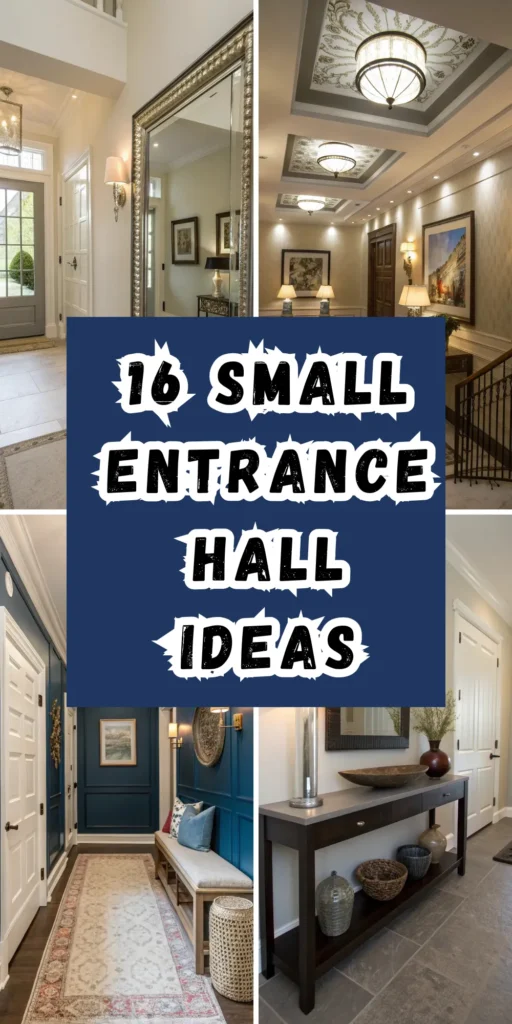
The art of designing successful small entrance halls lies in selecting multi-functional elements that serve practical needs while creating visual impact through strategic use of color, lighting, and storage solutions. When executed thoughtfully, these intimate spaces can achieve the same welcoming warmth and organizational efficiency found in grand foyers, often with even more character and charm.
Wall-Mounted Floating Console
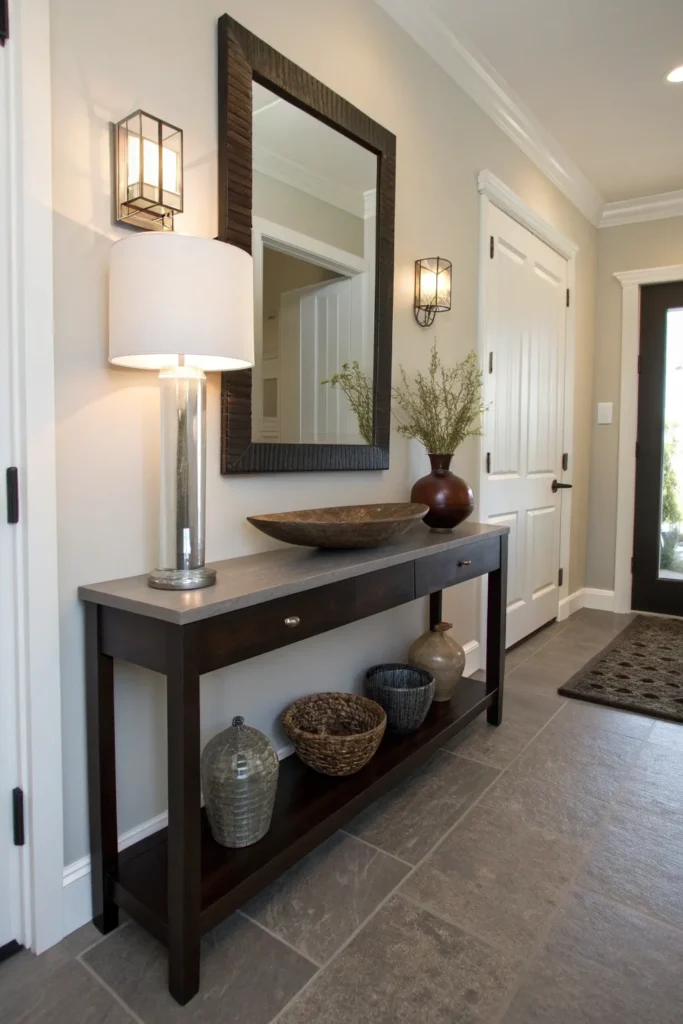
Why this works: A narrow floating console provides essential surface space for keys and mail without occupying precious floor area, while creating clean, modern lines that make small spaces feel larger.
Implementation: A sleek wall-mounted console 12-18 inches deep is installed at standard table height with hidden brackets for a floating appearance. Small decorative bowls, a table lamp, and minimal seasonal decor create function without clutter.
Who benefits: Those needing surface space in narrow halls and anyone wanting contemporary styling that maximizes floor space for easier traffic flow.
Pro tip: The console is positioned to align with light switches or door frames for visual harmony, while a small mirror above reflects light and creates depth.
Vertical Storage Tower
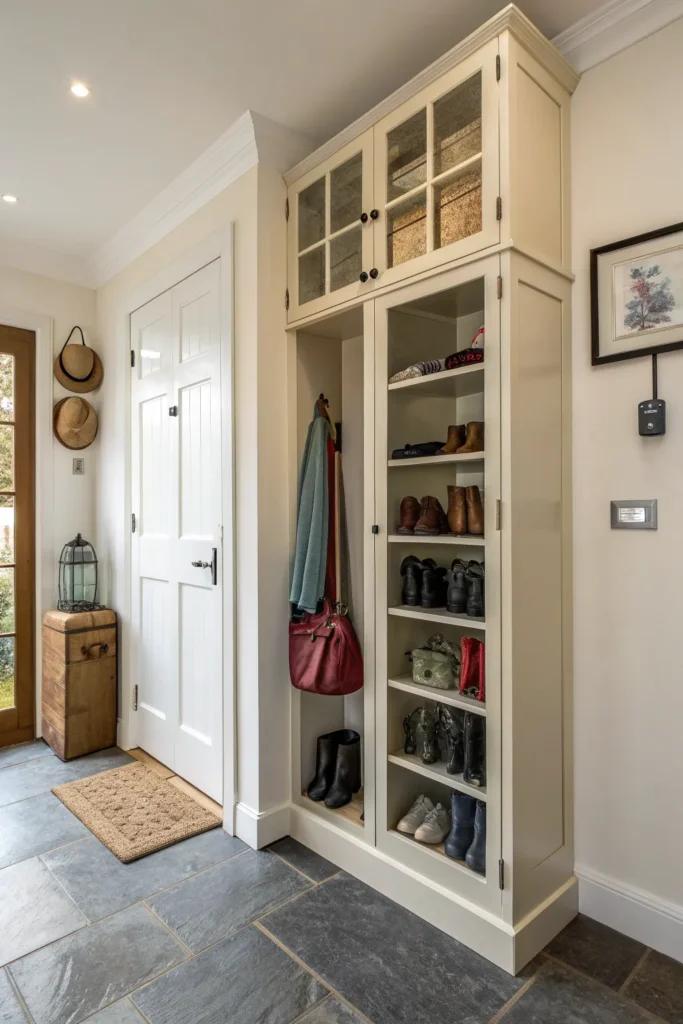
Transform dead corner space into hardworking storage with tall, narrow units that maximize vertical space while maintaining a minimal footprint.
Implementation: A slim storage tower with multiple shelves and enclosed compartments provides space for shoes, bags, umbrellas, and seasonal items. Units in light colors or with glass fronts prevent the space from feeling cramped.
Best for: Families needing extensive storage in minimal space and those wanting organized solutions that keep clutter hidden but accessible.
Con: Tall units require careful anchoring for safety, but provide unmatched storage capacity in the smallest possible floor footprint.
Mirror Wall Treatment

Why try this? Strategic mirror placement doubles visual space while reflecting available light to make small entrance halls feel significantly larger and brighter.
Steps: A large mirror or collection of smaller mirrors is positioned to reflect windows, light fixtures, or interesting architectural details. Frames in metallic finishes add glamour while the reflective surface creates the illusion of expanded space.
Why it works: Light reflection and visual depth tricks make the brain perceive more square footage while creating an elegant, sophisticated entrance experience.
Styling tip: Mirrors are positioned to reflect pleasant views rather than directly facing the front door, which can feel awkward for guests entering the space.
Built-In Bench with Storage
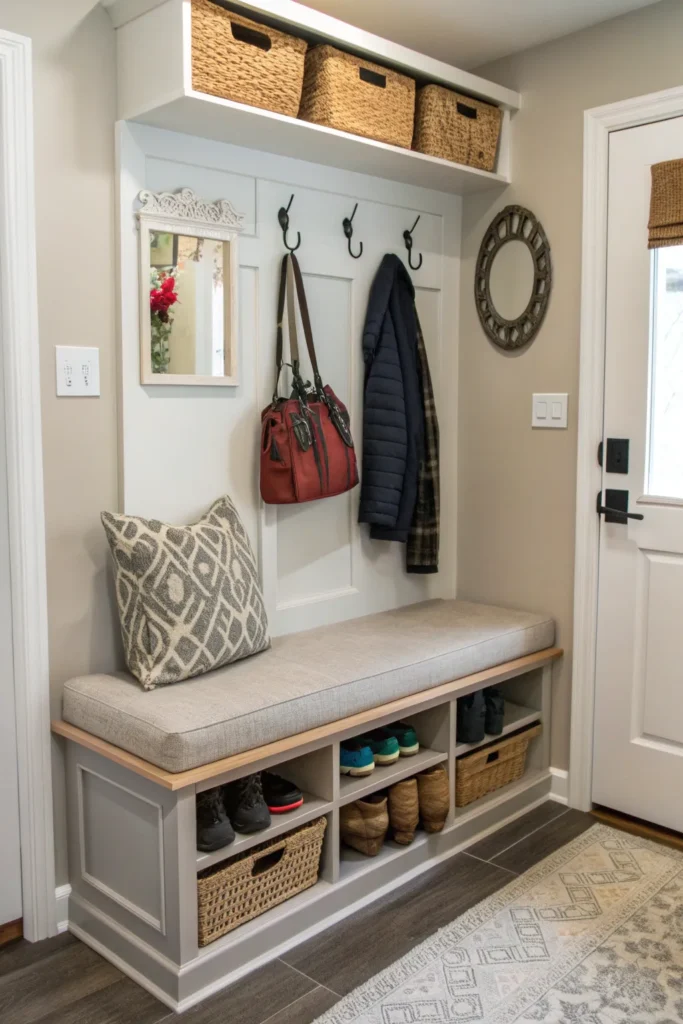
Create a functional seating and storage solution with a custom built-in bench that serves multiple needs while fitting perfectly in small spaces.
How to: A bench with hinged top storage is built to fit the exact width of the entrance hall, with hooks above for coats and bags. Cushions add comfort while baskets underneath organize shoes and accessories.
Why it matters: Provides essential seating for shoe changes while maximizing storage capacity and creating custom-fitted solutions for awkward spaces.
Pro tip: The bench height is planned to work with standard coat hook placement while providing comfortable seating for both adults and children.
Gallery Wall with Personal Photos
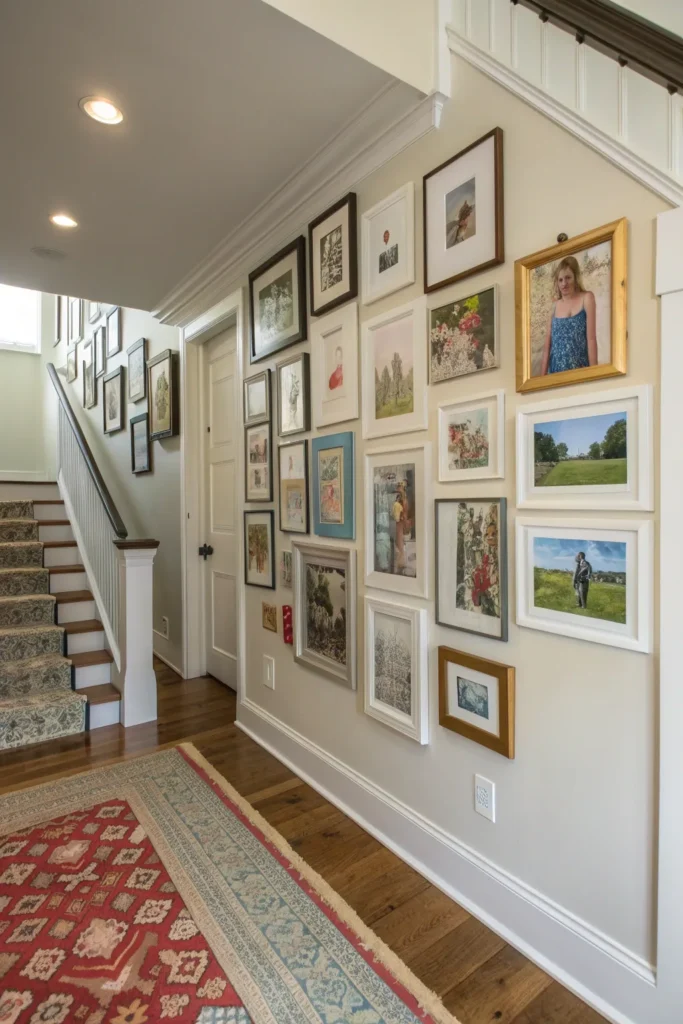
Why try this? A curated collection of family photos and artwork creates personality and warmth while giving guests immediate insight into your family’s story and interests.
How-to: Frames in coordinating colors are arranged in a cohesive layout that fits the wall proportions. Mix family photos, children’s artwork, and meaningful prints while maintaining consistent spacing and visual balance.
Best for: Those wanting to personalize their entrance and families who enjoy displaying memories and achievements in a welcoming way.
Con: Gallery walls require regular updating and maintenance, but provide unmatched personality and conversation starters for guest interactions.
Pendant Lighting Statement
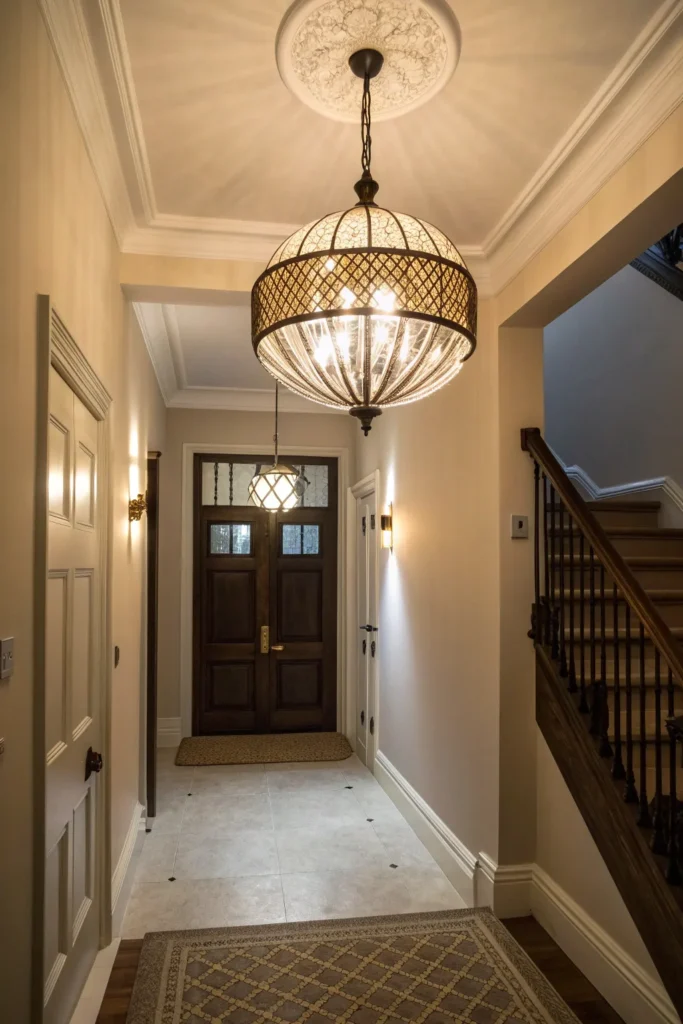
Add dramatic impact with oversized pendant lights that serve as functional art while providing essential illumination for small entrance areas.
Steps: A statement pendant light scaled appropriately for ceiling height creates visual interest while providing task lighting. Dimmer switches allow for mood adjustment throughout the day and evening hours.
Why it’s helpful: Draws attention upward to make ceilings feel higher while providing focused lighting that makes the entrance feel welcoming and well-designed.
Pro tip: The pendant is positioned to avoid head bumping while creating dramatic shadows and light patterns that add visual interest to plain walls.
Narrow Console Table with Drawers
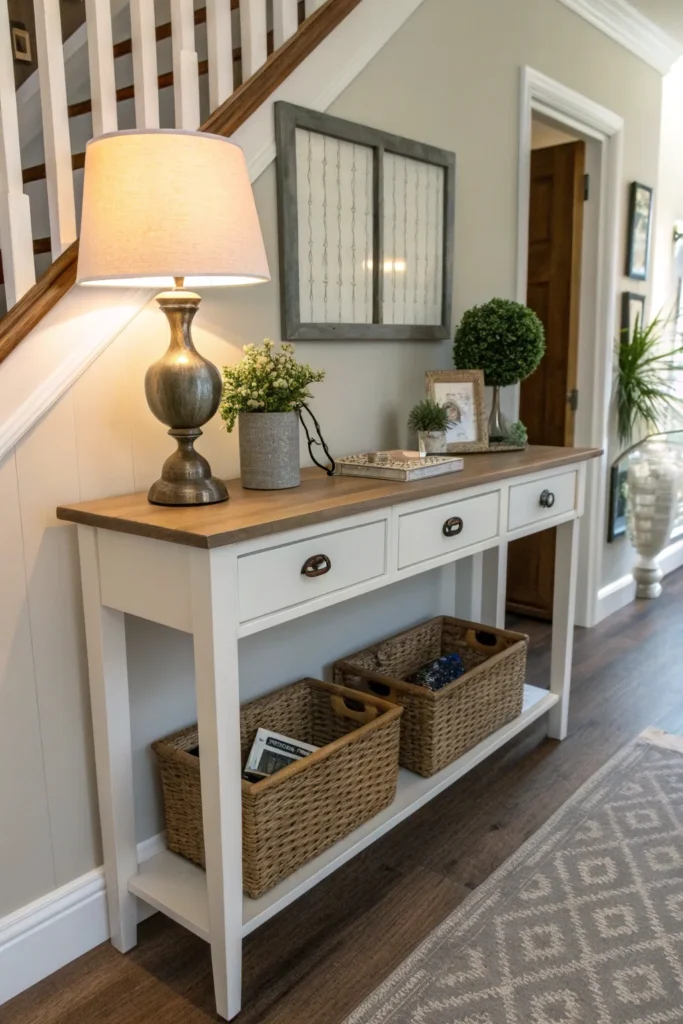
Transform minimal floor space into maximum functionality with ultra-narrow console tables that provide storage and display opportunities.
Benefits: Tables as narrow as 8-10 inches provide surface space for essentials while built-in drawers hide clutter like keys, sunglasses, and small accessories. Styling with lamps and plants adds warmth.
Steps: The console is positioned against the longest wall available while leaving adequate passage space. Drawers are organized with small containers for maximum efficiency.
Best for: Those needing both surface and hidden storage in extremely narrow spaces where every inch of functionality matters.
Styling tip: The table is styled with odd numbers of objects in varying heights to create visual interest without overwhelming the small space.
Hooks and Peg Rail System
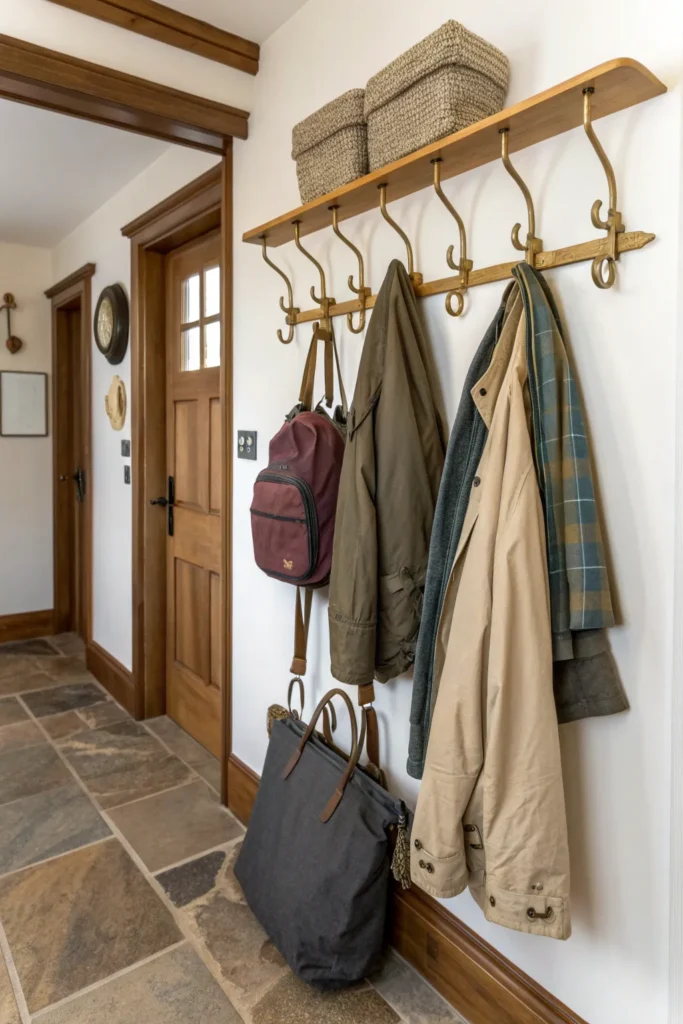
Create organized coat storage with attractive wall-mounted hook systems that keep outerwear accessible while maintaining clean, uncluttered appearance.
Implementation: A peg rail or series of individual hooks is installed at appropriate heights for family members. Materials like wood, brass, or black iron complement home decor while providing essential function.
Who it’s for: Families needing accessible coat storage and anyone wanting simple, effective organization that doesn’t require floor space.
Con: Items hanging on hooks are visible rather than hidden, but strategic positioning and attractive hooks can make storage part of the decor.
Accent Wall with Bold Paint Color
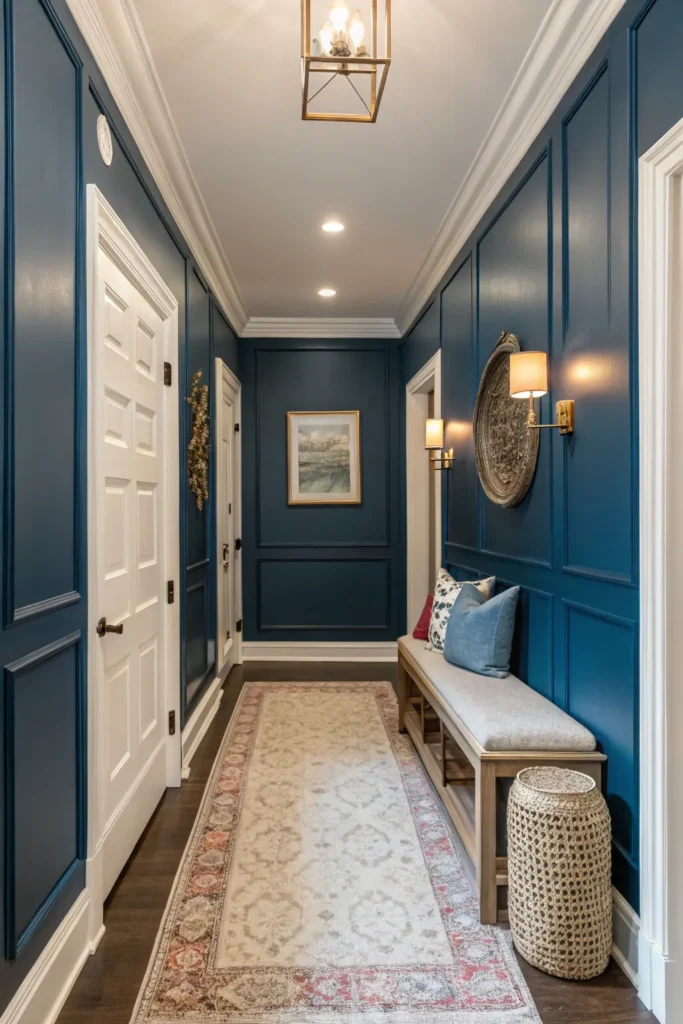
Why try this? A single wall in a dramatic color creates immediate impact and personality while making small spaces feel intentionally designed rather than cramped.
How-to: The most visible wall is painted in a rich, welcoming color that complements the home’s overall palette but makes a statement. Deep blues, warm grays, or rich greens add sophistication.
Best for: Those wanting high-impact design changes that require minimal investment while creating memorable first impressions.
Con: Bold colors can feel overwhelming in very small spaces, but proper lighting and light-colored accessories prevent the area from feeling cramped.
Slim Shoe Storage Solutions
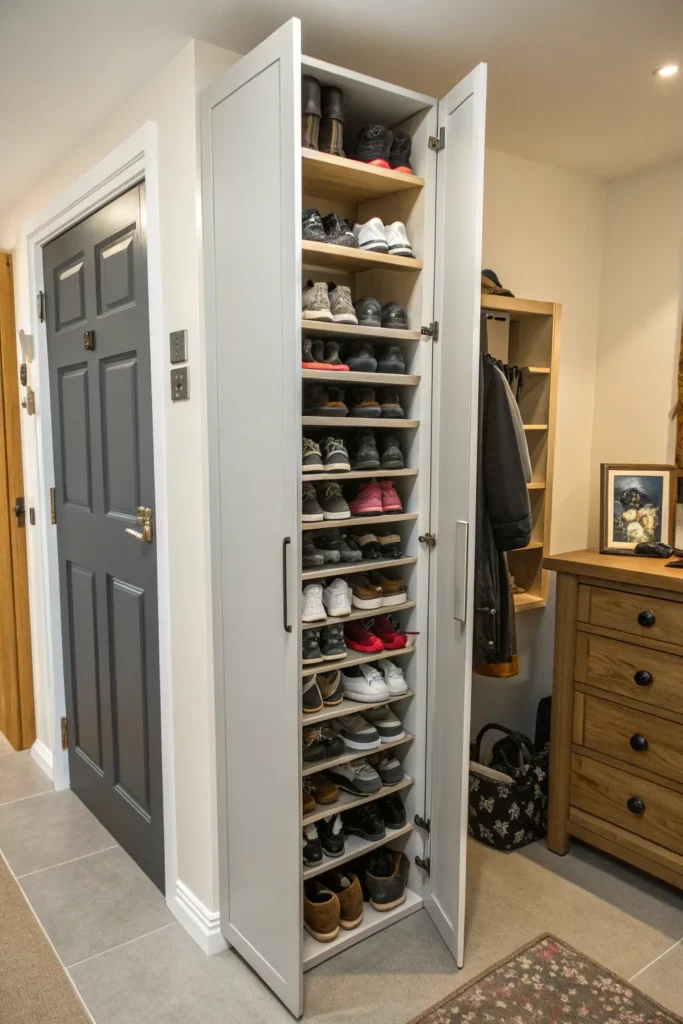
Add organized shoe storage with narrow, vertical solutions that keep footwear tidy while taking up minimal floor space in tight entrance areas.
How to: Tall, narrow shoe cabinets or over-the-door organizers provide storage for multiple pairs while maintaining clean lines. Units with doors hide clutter while open cubbies provide quick access.
Why it works: Prevents shoe pile-ups that make small spaces feel messy while providing designated storage that encourages family organization habits.
Downside: Requires regular maintenance to stay organized, but prevents the scattered shoe problem that plagues most entrance halls.
Ceiling-Mounted Storage
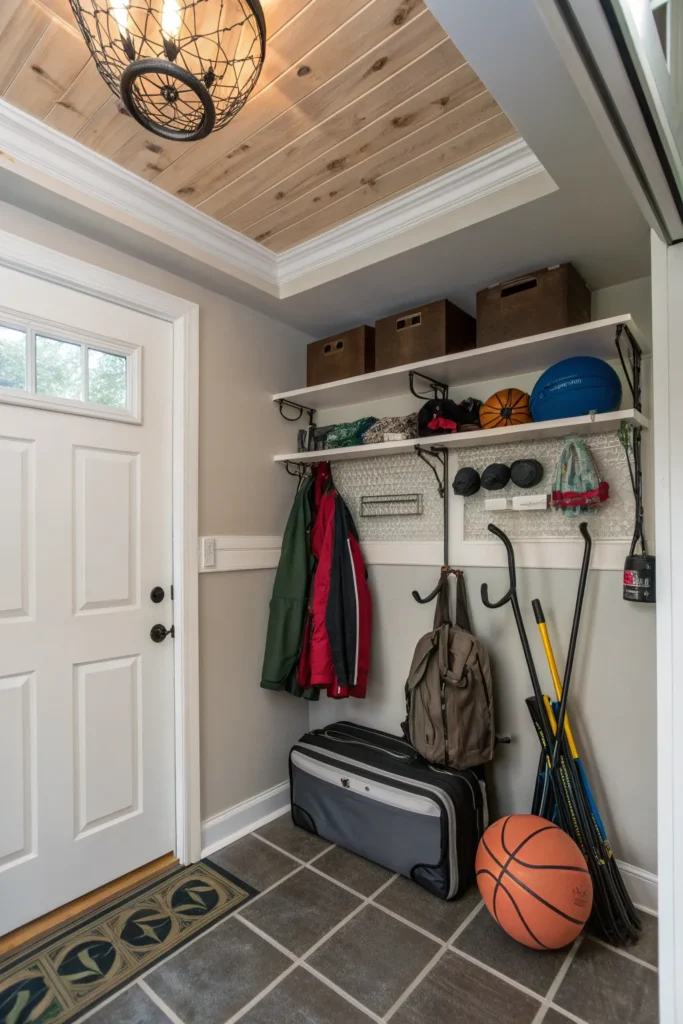
Maximize unused overhead space with ceiling-mounted hooks, nets, or pulley systems that store seasonal items without cluttering floor areas.
Steps: Heavy-duty ceiling hooks or rack systems are installed to store items like umbrellas, sports equipment, or seasonal decorations. Pulley systems allow easy access to frequently needed items.
Why it’s helpful: Utilizes space that’s typically wasted while keeping seasonal items accessible but out of daily sight lines.
Pro tip: Items stored overhead are kept in attractive containers or bags that complement the decor rather than creating visual clutter.
Multi-Level Lighting Design
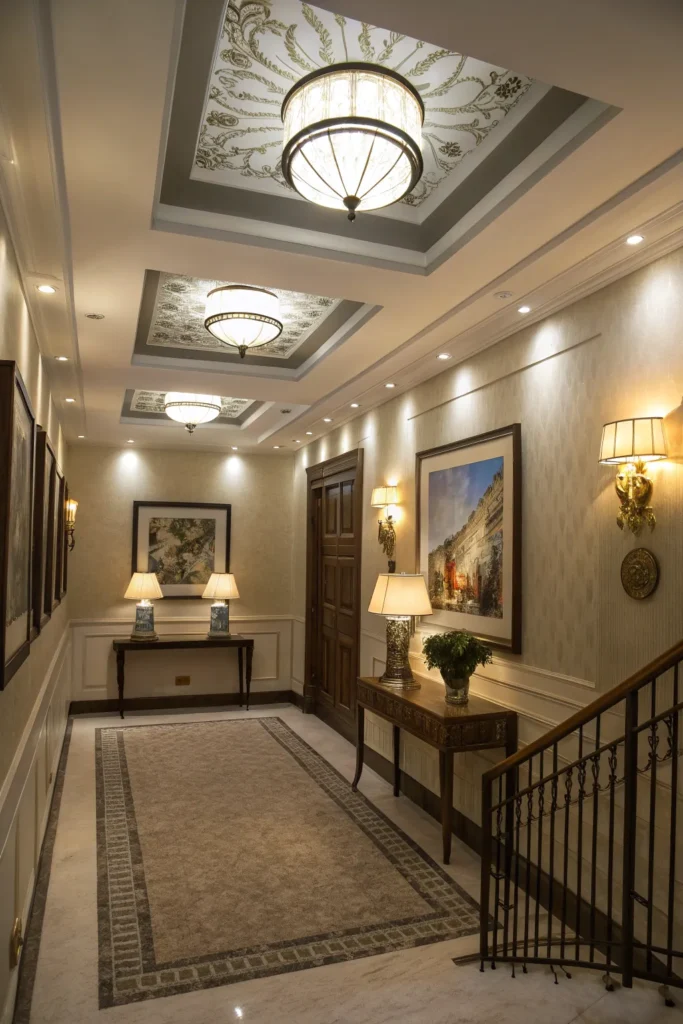
Create welcoming ambiance with layered lighting that includes ambient, task, and accent options for different times of day and various needs.
Implementation: Overhead lighting provides general illumination while table lamps or wall sconces add warmth. Small accent lights highlight artwork or architectural features for evening drama.
Who benefits: Those wanting to create sophisticated lighting design and anyone needing flexible illumination for different activities and times.
Drawback: Multiple light sources require more complex electrical planning, but create the professional, layered lighting found in high-end design.
13. Decorative Storage Baskets
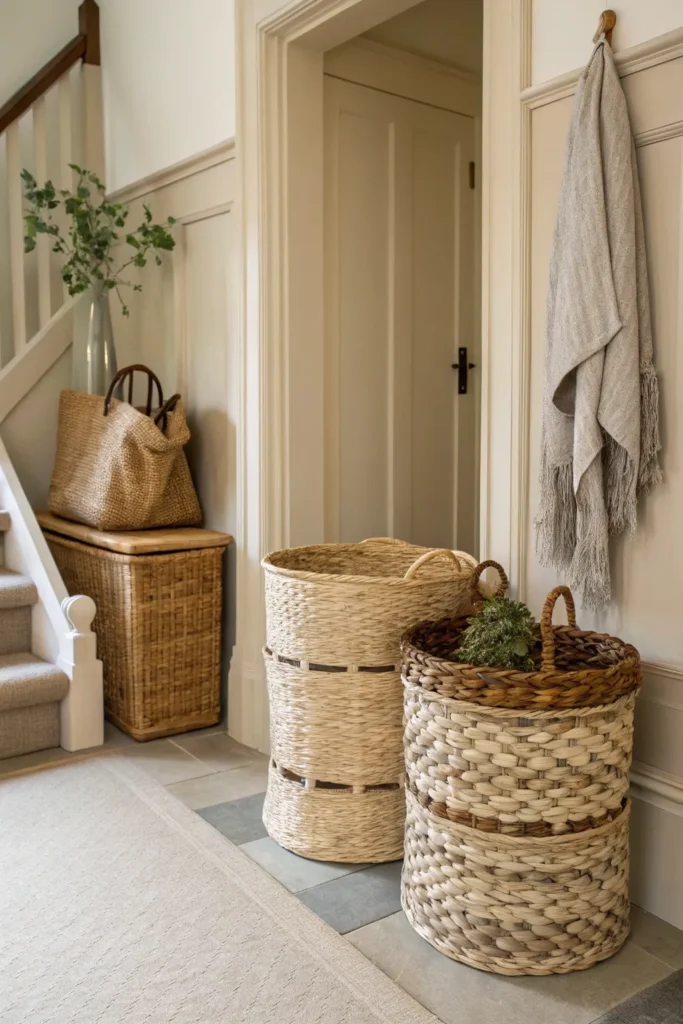
Add texture and warmth while hiding clutter with attractive baskets that provide flexible storage for changing seasonal needs.
How-to: Woven baskets in natural materials are positioned on shelves, under benches, or in corners where they provide hidden storage for items like gloves, scarves, dog leashes, or cleaning supplies.
Best for: Those wanting storage solutions that add to rather than detract from decor and families with changing storage needs throughout seasons.
Con: Open baskets can become catch-alls for random items, but proper labeling and regular editing maintain organization and attractive appearance.
14. Sliding Door Closet Organization
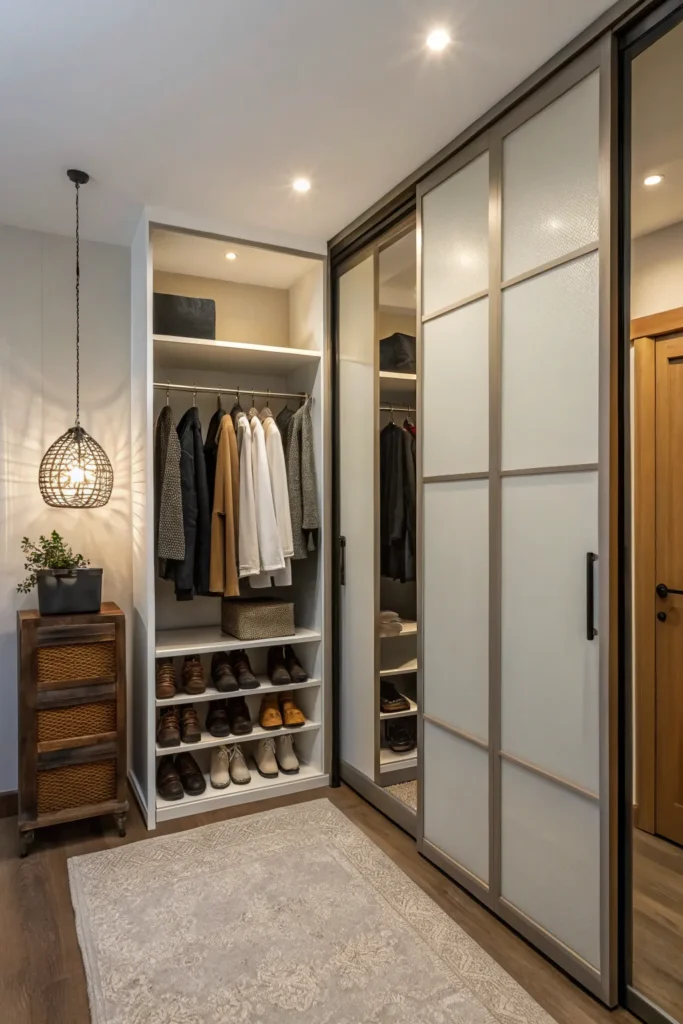
Transform existing closet space into efficient storage with sliding doors that don’t require clearance space and organized interiors that maximize capacity.
Steps: Traditional hinged doors are replaced with sliding panels that save space while interior organizers maximize storage for coats, shoes, and accessories. Lighting inside improves visibility and function.
Why it’s great: Provides extensive hidden storage without requiring additional floor space while sliding doors work better in tight spaces than traditional options.
Pro tip: Interior organization systems are customized for family needs with adjustable components that adapt as storage requirements change over time.
15. Window Treatment and Natural Light
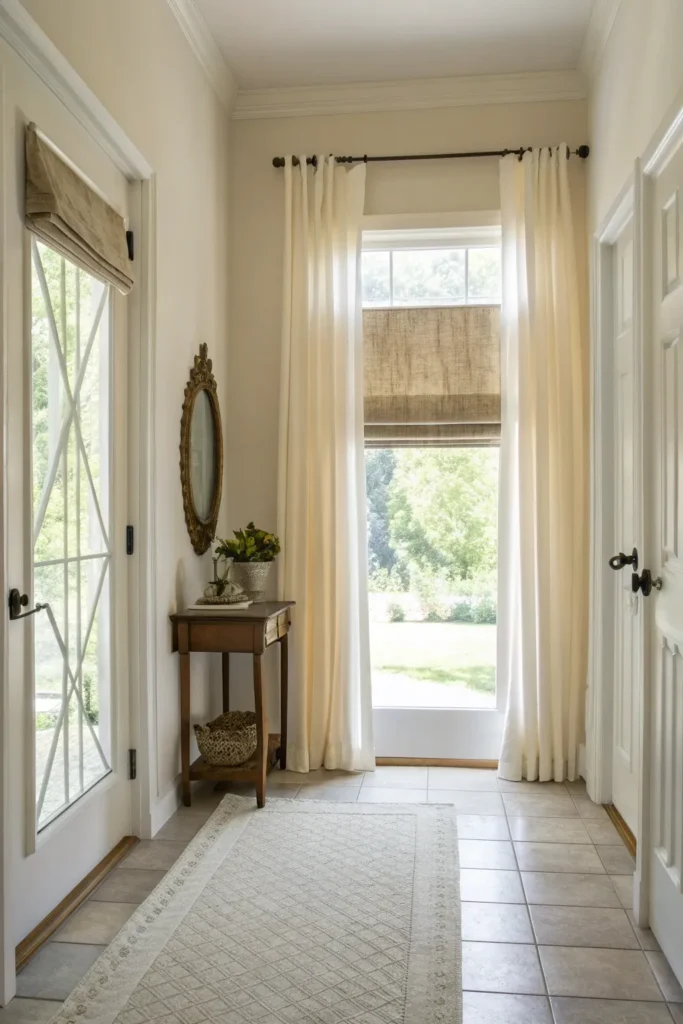
Maximize available natural light with window treatments that provide privacy when needed while allowing maximum light penetration during daytime hours.
Implementation: Light-filtering shades, sheer curtains, or top-down/bottom-up cellular shades provide privacy options while maintaining brightness. Light colors and simple styles prevent overwhelming small windows.
Who it’s for: Entrance halls with windows and anyone wanting to maximize natural light while maintaining appropriate privacy levels.
Downside: Window treatments require regular cleaning and maintenance, but significantly improve both function and appearance of windowed entrance halls.
16. Seasonal Decoration Station
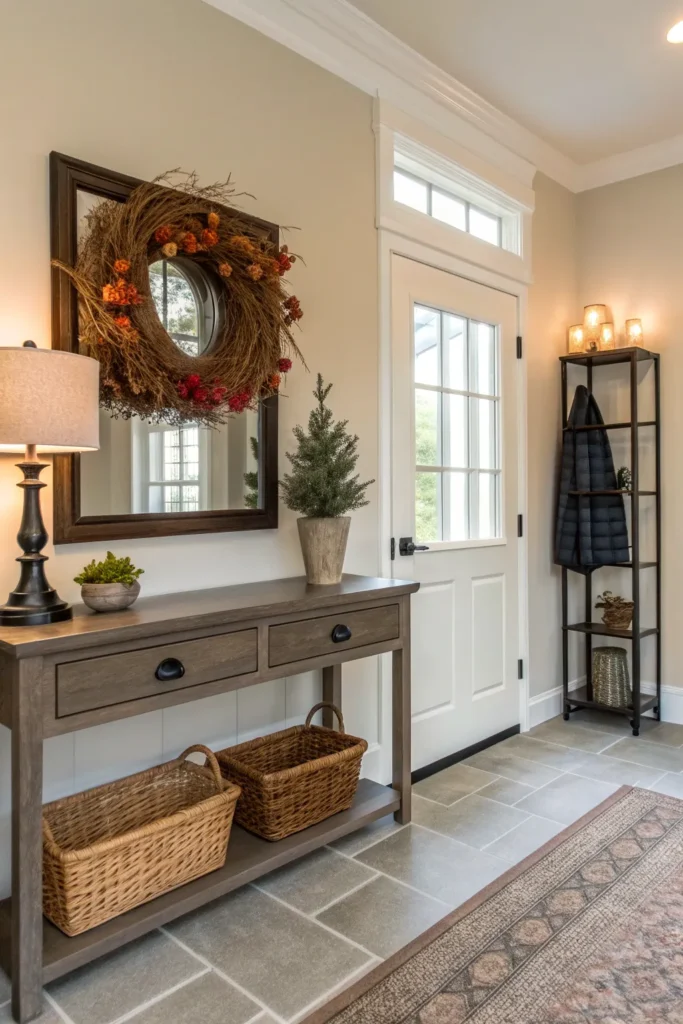
Create a designated area for rotating seasonal decorations that keep the entrance feeling fresh and current throughout the year.
Steps: A small shelf, console top, or wall area is reserved for seasonal displays that can be easily changed. Storage nearby keeps off-season items organized and accessible for quick updates.
Best for: Those who enjoy seasonal decorating and want their entrance to feel current and welcoming throughout different times of year.
Con: Requires regular attention and storage for seasonal items, but creates the fresh, updated feeling that makes homes feel well-cared-for and welcoming.
Transform Your Small Space Into a Grand Welcome
Small entrance halls offer incredible potential for creating memorable first impressions when every element is chosen thoughtfully for maximum impact and functionality. The most successful small entrance designs combine essential storage and lighting with personal touches that reflect your family’s style while maintaining the clean, uncluttered appearance that makes compact spaces feel larger. Start with fundamental needs like lighting and storage, then layer in decorative elements that create the warm, welcoming atmosphere that makes everyone feel at home.

